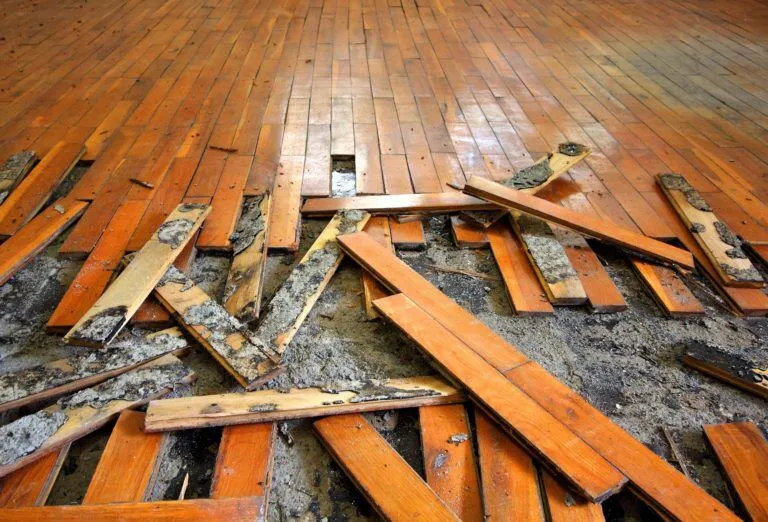Installing wood floors in a finished basement can be a decision that comes with both risks and rewards. While the allure of warm, natural wood can add a touch of elegance to your basement space, there are factors to consider that may impact the long-term success of this flooring choice. In this blog post, we’ll explore the potential risks and rewards associated with installing wood floors in a finished basement.
Rewards of Wood Floors in a Finished Basement
1. Aesthetic Appeal:
- Warmth and Elegance: Wood floors bring a sense of warmth and elegance to any space. They can transform a basement into a cozy and inviting area, making it feel like a natural extension of the rest of your home.
2. Increased Home Value:
- Desirability: Hardwood floors are often considered a premium feature that can enhance the overall value of your home. Potential buyers may find the presence of wood floors in the basement appealing.
3. Versatility in Design:
- Design Flexibility: Wood flooring comes in a variety of colors, grains, and styles, providing flexibility in design. This allows you to choose a wood type that complements your basement’s aesthetic and seamlessly integrates with the rest of your home.
4. Ease of Cleaning:
- Low Maintenance: Wood floors are relatively easy to clean and maintain. Regular sweeping and occasional mopping can keep them looking beautiful for years.
Risks Associated with Wood Floors in a Finished Basement
1. Moisture and Humidity:
- Basement Dampness: Basements are prone to higher levels of moisture and humidity. Wood is sensitive to these conditions and can warp, buckle, or become damaged when exposed to excess moisture. Proper moisture control measures are crucial.
2. Water Damage:
- Potential Flooding: Basements are susceptible to flooding, whether due to heavy rain, plumbing issues, or other unforeseen events. Wood floors can be severely damaged in the event of water exposure.
3. Temperature Fluctuations:
- Temperature Extremes: Basements may experience temperature fluctuations. Wood is sensitive to extreme temperature changes, and prolonged exposure to these conditions can lead to expansion or contraction of the wood.
4. Subfloor Considerations:
- Subfloor Moisture Barriers: Installing an appropriate subfloor with moisture barriers is essential. Failure to do so can allow moisture to seep through, causing damage to the wood.
Mitigating Risks and Maximizing Rewards
To enjoy the rewards of wood floors in a finished basement while minimizing risks, consider the following tips:
- Proper Subflooring: Install a high-quality subfloor with moisture barriers to protect the wood from moisture-related issues.
- Waterproofing: Implement effective waterproofing measures to safeguard against potential flooding or water damage.
- Professional Installation: Hire experienced professionals for the installation. They can assess your basement’s specific conditions and recommend suitable wood types and installation techniques.
- Regular Maintenance: Keep up with regular maintenance, including checking for signs of moisture, promptly addressing any leaks, and using area rugs to protect high-traffic areas.
Installing wood floors in a finished basement involves weighing the appeal and potential increase in home value against the risks of moisture and water damage. Ultimately, a well-informed decision and proper maintenance are key to ensuring the success of wood flooring in your finished basement.

